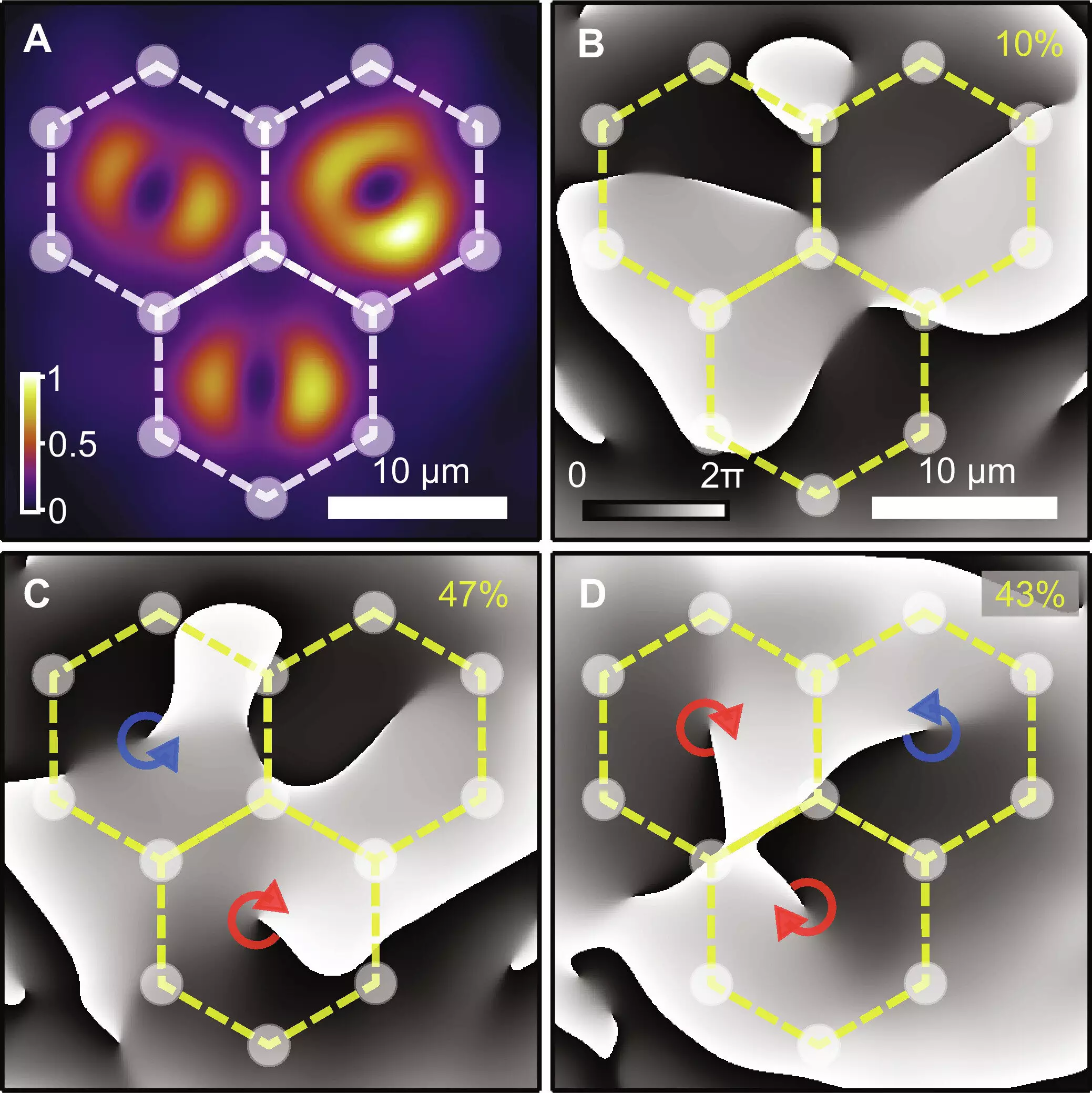Researchers from various institutions have collaborated to study the spontaneous formation and synchronization of multiple quantum vortices in optically excited semiconductor microcavities. This groundbreaking research has opened up new possibilities for the exploration and simulation of condensed matter systems using polariton quantum vortices.
The team of researchers managed to create a triangular lattice consisting of 22 cells with trapped polariton condensates, each carrying a single-charge vortex. These quantum vortices exhibited peculiar behavior, showing an opposite topological vortex charge in neighboring cells, suggesting an “antiferromagnetic coupling” between them.
The experiments were conducted at Skoltech, utilizing a semiconductor planar microcavity that involves InGaAs quantum wells sandwiched between highly reflective mirrors. By optically exciting the sample with a patterned laser beam, the researchers were able to generate a hexagonal lattice of tightly focused Gaussian beams, resulting in the formation of polariton condensates within the lattice cells.
Upon studying the dynamics of quantum vortices within the lattice, the researchers found that while individual cells exhibited a mix of vortex and antivortex states, neighboring cells tended to synchronize their topological charges, forming stable solutions of opposite charges. This behavior led to the discovery of extended antiferromagnetic order within the triangular lattice of vortices.
Theoretical analysis conducted by Dr. Helgi Sigurðsson from the University of Warsaw confirmed the presence of antiferromagnetic correlations within the vortex lattice. By measuring the orbital angular momentum of each condensate across multiple lattice cells and comparing it with the Ising spin Hamiltonian, the researchers established a significant correlation between the observed vortex configurations and the low-energy solutions of the spin system.
The synchronization of quantum vortices in semiconductor microcavities represents a remarkable achievement in the field of condensed matter physics. The ability to create and control polariton vortices within structured lattices opens up new avenues for studying complex quantum phenomena and simulating condensed matter systems. Further research in this area could lead to significant advancements in quantum technologies and materials science.


Leave a Reply
You must be logged in to post a comment.